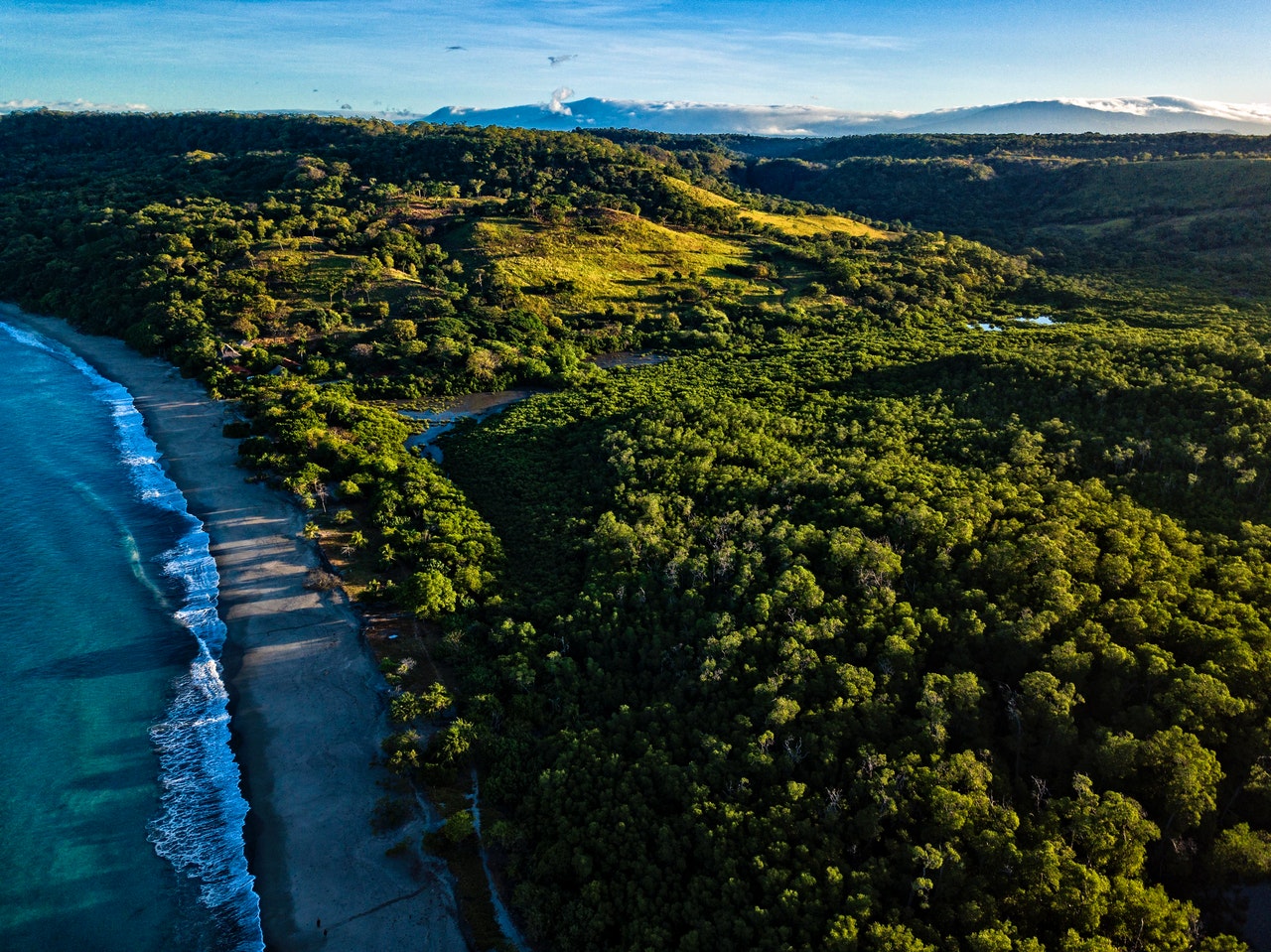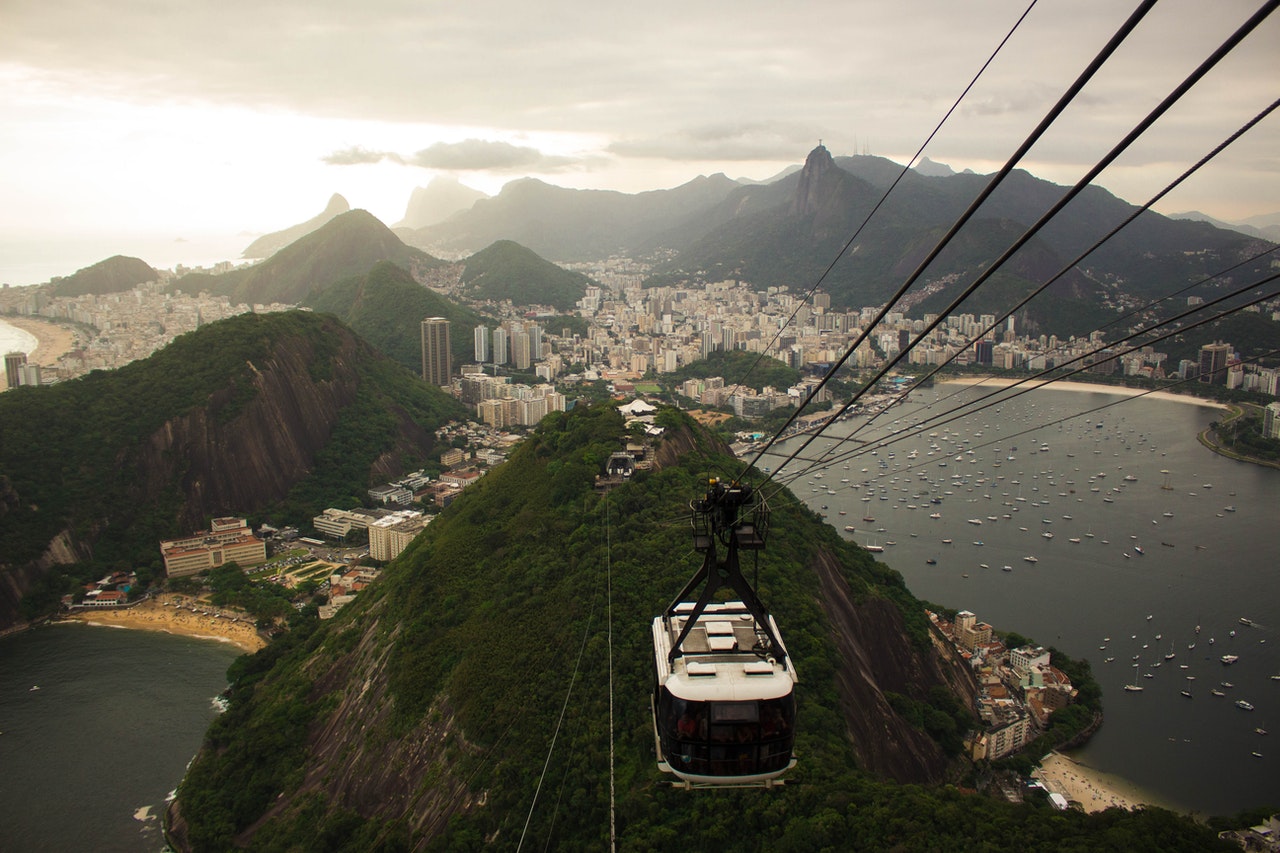Why climate adaptation plans in Latin America are more important than ever
COVID-19 does not have to hold back climate adaptation plans. A number of countries in Latin America have made a promising start in reviewing their climate commitments. Can the others follow their lead?
T
he international climate community was looking towards 2020 as a real opportunity to advance in the main challenge of our century: dealing with climate change. But another appeared, one closely related to the climate issue.
The coronavirus forced the postponement of the UN climate conference COP26 that was to be held in the United Kingdom in November. But its delay until November 2021 does not mean that climate action will slow down globally, including in Latin America.
Before the end of the year, countries that signed up to the Paris Agreement will have to present their new and more ambitious nationally determined contributions (NDCs). In Latin America, only Chile has done so but some countries have declared their intention to submit them.
According to a 2016 UN report, Latin America and the Caribbean represents only 5% of the global emissions of these gases, but that share is increasing. Moreover, the effects of climate change are felt first-hand in many ways, from long periods of drought to heavy rainfall.
But climate action is hardly the priority in a region where economic and social crises prevail, and where financial support is a necessity if more ambitious climate policies are to be implemented. All this was accentuated by the coronavirus.
Chile is being more ambitious
“Thank you Chile for a more ambitious NDC, which recognises the need to act urgently on climate change, in the context of current challenges.” This is how the executive secretary of the UN Framework Convention on Climate Change (UNFCCC), Patricia Espinosa, congratulated Chile in April on the presentation of its updated climate plan.
After chairing COP25, but in Madrid due to an outbreak of social protests, Chile received praise for its recent presentation despite the coronavirus, and for the fact that it was the result of a process of public consultation with civil society and academics.
Overall, Chile committed to annual emissions of no more than 95 megatons of carbon dioxide equivalent (MtCO2eq) by 2030, and to peaking its emissions by 2025. Between 2020 and 2030, emissions must not exceed 1,100 MtCO2eq, states the NDC.
While acknowledging the improvements in these figures compared to its previous plan, the update only earned Chile a change in the evaluation carried out by Climate Action Tracker from “very insufficient” to “insufficient”. The proposed goals are not yet compatible with efforts to limit global warming to 2C, much less to 1.5C.
Chilean Minister for the Environment Carolina Schmidt presents the country’s updated NDC during lockdown via video conference. Photo by Ministerio del Medio Ambiente
“They included some elements pointed out during the public consultation, and that has been valued,” acknowledges Pamela Denise Poo Cifuentes, coordinator of policy and regulation of the Sustainable Chile initiative. “There are several NDC commitments that require public policy, such as bills, which can then find their opposition to move forward,” she adds.
The other critical views on climate action in Chile are its commitment to plant 200,000 hectares of forest and the contribution that might have to reducing net emissions. Moreover, of the 28 coal-fired power plants in operation, 10 will be closed before 2024 and the rest before 2040.
Can other Latin American countries advance climate action?
Many admire Chile for having presented their updated plan despite the pandemic. And many will follow the participatory process it employed.
On the other side of the Andes, Argentina began the process of reviewing its climate plan along with changes in government. After President Alberto Fernández came to power in December 2019, the minister of environment and sustainable development, Juan Cabandié, travelled to COP25 in Madrid and promised to improve the ambition of the NDC.
Based on their current compromises, Argentina will have to reduce its emissions by 18% unconditionally (that is, without dependence on external support) by 2030. A preliminary version of the updated NDC is to be presented in September.
During the last four years, Argentina has worked on some issues associated with climate negotiations with Uruguay, which in 2018 derived about 35% of electricity generation from wind; and with Brazil, which generates more planet-warming emissions than any other Latin American country.
For Cláudio Angelo, communication coordinator of Brazil’s NGO Climate Observatory, the expectations for Brazil’s NDC are not good. Either it does not present an update this year or it complies to present a new NDC, but weaker than the last one. “There is no structure to develop this policy, no one has yet developed a plan to implement the NDCs,” he says.
“We must not forget that one of the promises, or threats, of Bolsonaro’s presidential campaign was that he would remove Brazil from the Paris Agreement, but then due to pressure from agribusiness, he did not do so,” Angelo said. In Brazil, the highest-emitting sector is agriculture.
The second largest emitter after Brazil in Latin America is Mexico. In April, the government launched the “Intergovernmental Dialogue on NDC Updates” in the presence of 160 representatives of state governments, as part of a participatory process to update its NDC.
In Peru, a “broadly participatory, decentralised and inclusive process” will begin to update its NDC this year, according to Laura Secada Daly, general director of climate change and desertification at the Ministry of Environment. “The process should help identify proposals that contribute to strengthening its implementation,” she adds. Transparency, coherence with a long-term vision, and opportunities for post-pandemic reactivation are the other tools she considers key.
Similarly, Costa Rica has already launched the process of updating its climate plan, which will also include the participation of various actors. Due to the pandemic measures, the formats of this participation are being redefined. The objective will be to present the NDC at the end of this year, based on the plan to decarbonise by 2050 and its national adaptation policy.

Costa Rica has already launched the process of updating its climate plan.
Andrea Mezamurillo, director of climate change, does not overlook the complexities of the pandemic.
“Sensitivities are on the surface, both for those who see the similarities between the health and climate crises and the lessons they leave, and for those who feel that economic measures must be accelerated that are not necessarily consistent with climate goals. We are facing a situation that can be an opportunity or a challenge”.
Working together
“Latin America has been fragmented for 20 years or a little more. It is seen not only in the ideology and politics of each of the countries, but also in the ability to articulate decisions, to agree on minimal issues, and that has anesthetised a large part of the entities in the region,” explains Manuel Pulgar Vidal, global leader in climate and energy for WWF (World Wide Fund for Nature).
The climate question is not far from this fragmentation. Rather than imitating the more integrated and coordinated work of African countries, Latin Americans participate in the process of climate negotiations in different factions. “The challenge for Latin American continues to be to unify a common climate agenda,” emphasises Pulgar Vidal.
For Peru’s former environment minister and president of COP20 in Peru, the current pandemic may be the opportunity to unify a common agenda in the region regarding health and other fundamental associated issues such as climate, nature, economy and development.

Brazil generates more planet-warming emissions than any other Latin American country.
Pulgar Vidal highlights another element to consider for climate action in the region: the decarbonisation plans for 2050. “The states have to prepare their collective vision for 2050: what is a decarbonised country and how are we going to achieve it?” he asks, arguing: “This will help us overcome the political difficulties that mean continuous changes of mandate.”
Although some countries, like Argentina, have announced a commitment to carry out decarbonisation plans for their economy, and others have stated that they are working on them, at the moment only Chile and Costa Rica have presented concrete plans to achieve net zero carbon emissions in 30 years.
The secretary general of the UN, António Guterres, stressed that, even in the context of the pandemic, the other latent emergency is the environmental crisis and that the post-pandemic recovery solution must be investing in a green economy. Climate action plans during 2020 have the opportunity to take that path.
The ideas presented in this article aim to inspire adaptation action – they are the views of the author and do not necessarily reflect those of the Global Center on Adaptation.